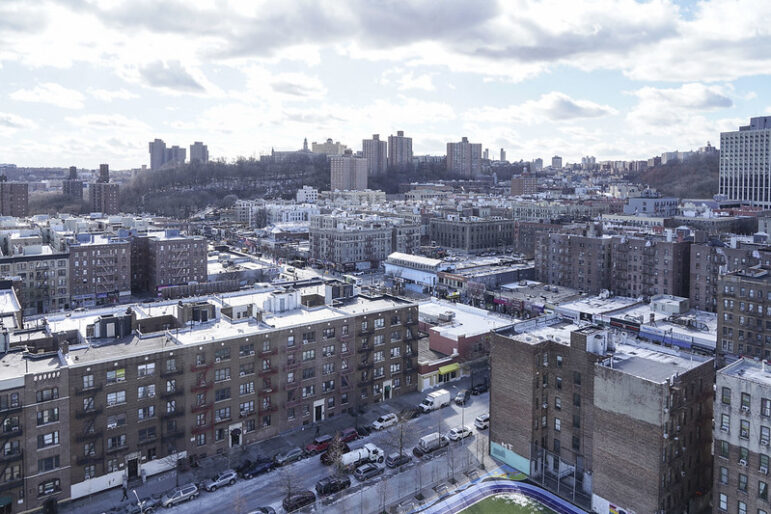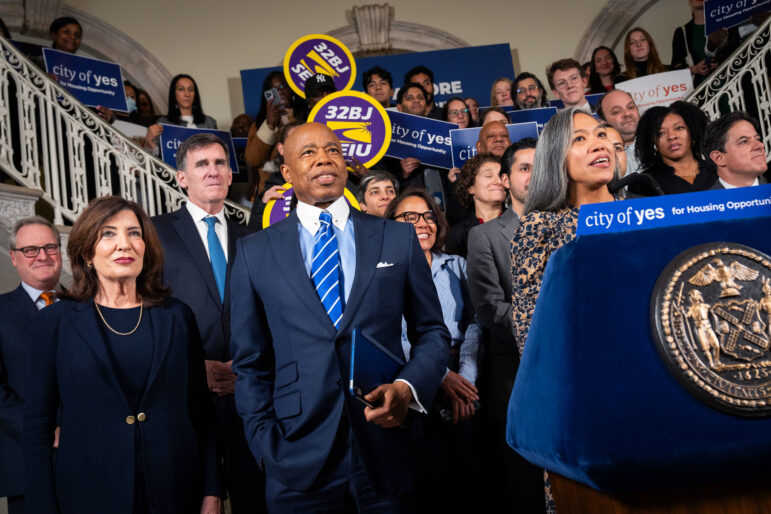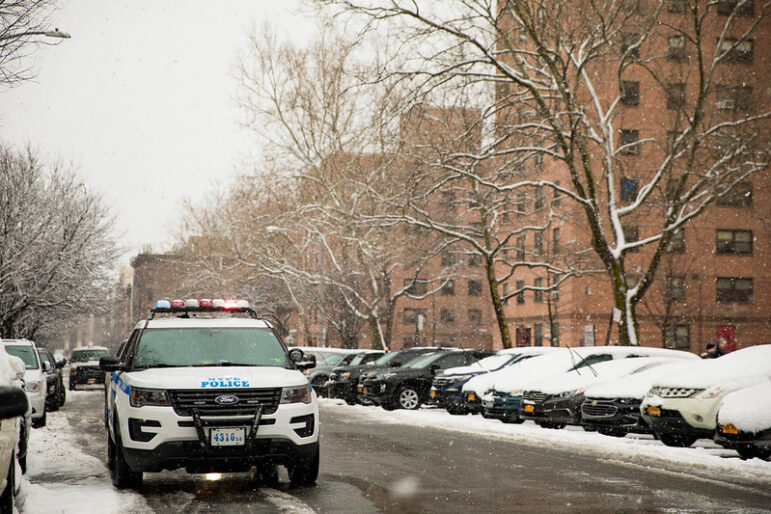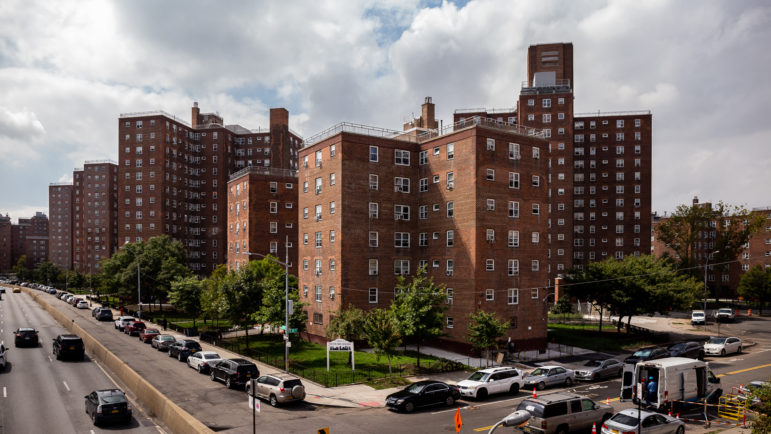City Hall was supposed to begin reporting more details on how it removes homeless New Yorkers from public spaces, sharing data on where each sweep took place, the agencies involved, how many people were affected and the costs. But a month after the first due date, advocates and lawmakers are still waiting.
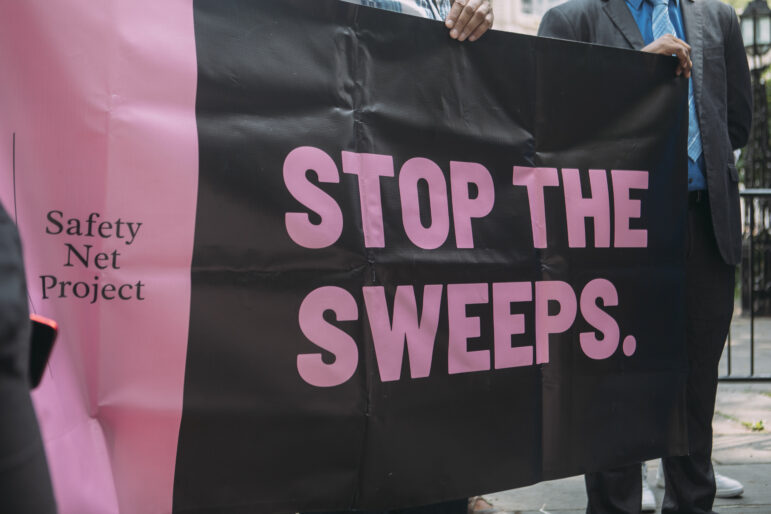
Before he entered a Manhattan shelter at the end of December, Eduardo Ventura spent several months sleeping outside in the East Village, where he said he was routinely caught up in the city’s longstanding “sweeps” practice—in which staffers from municipal agencies, including the NYPD, clear homeless New Yorkers from public spaces, often discarding their belongings in the process.
“They were sweeping me every day. They used to come and take my property or throw it out,” said Ventura, recounting the loss of his residency card, a laptop and a bike as a result of past sweeps. “Basically, we used to start from scratch, every other day.”
Last month, City Hall was supposed to begin publicly reporting more details on how it carries out these sweeps, sharing data on where each clean-up took place, which agencies were involved, how many people were affected and the costs of such removals.
The new reports are required each quarter under Local Law 34, passed by the City Council late last year. But a month after the first due date, advocates and lawmakers are still waiting.
“This is a lack of cooperation, and it really undermines the Council’s ability to move on critical legislation to make the city safer, to make the city stronger,” said Brooklyn Councilmember Shahana Hanif, who co-sponsored the reporting bill with Councilmember Sandy Nurse.
The legislation “is even more urgent” now than when it was passed, she added, pointing to an uptick this year in the city’s estimated unsheltered homeless population, as well as stricter re-entry rules for adult migrants without children in the shelter system, who are subject to 30- or 60-day limits unless they meet specific criteria for more time. Advocates worry that will lead to more people sleeping on the streets.
The reporting requirements also come as localities across the country are debating how governments can respond to homeless encampments. On Friday, the U.S. Supreme Court issued a ruling in a case out of Grants Pass, Oregon, that allows cities and states to penalize people for sleeping outdoors in public places.
“New York State desperately needs leadership that cares about all New Yorkers experiencing homelessness and those at risk of losing their homes,” Tracie Adams, a leader with VOCAL-NY’s Homelessness Union, said in a statement in response to the court’s ruling. The group accused both Mayor Eric Adams and Gov. Kathy Hochul of having “directed vast governmental resources in policing street homelessness,” since taking office.
Exactly what resources New York City puts towards sweeping homeless encampments is one detail Local Law 34 seeks to pin down. The reports required under the legislation need to include the number of city agency staffers dispatched to each removal, how much time they spend on the effort and whether any overtime hours or specialized equipment was used.
In a statement, a City Hall spokesperson said the administration intends “to be fully compliant with this new legislation,” but is still gathering the information mandated by the law.
“This requires an unprecedented and comprehensive compilation of data, and our teams are working diligently to gather all necessary information and produce the report as quickly as possible,” the spokesperson said.
Councilmember Nurse, who co-sponsored the bill requiring the reports, disputed this, saying most of the information sought is data the city is already tracking, but which has only been available to the public via Freedom of Information requests filed by advocates for the homeless.
“Our job as the Council is to do oversight and create transparency for the public about how the resources are being spent, and how we are solving the city’s hardest challenges,” Nurse said.
“We want to understand the cost of these removals. We understand that an encampment is not something that anybody in New York wants to see. We don’t want to see people sleeping out on the streets,” she said. “But we do think there are better policy solutions.”
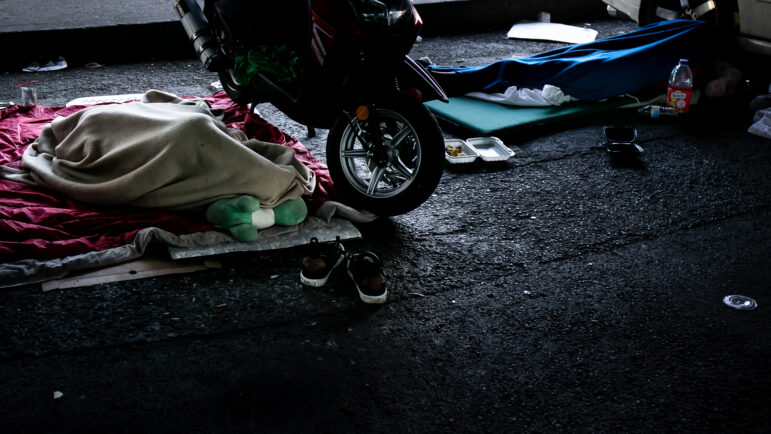
Adi Talwar
Several men sleeping in the street below the Brooklyn Queens Expressway in Clinton Hill last year.The city’s sweeps policy predates the current administration—former Mayor Bill de Blasio, for instance, carried out nearly 10,000 homeless encampment removals from 2016 to 2021, often in response to 311 complaints about such sites.
In March of 2022, Mayor Eric Adams formed a “street encampment task force,” which officials say has since responded to more than 11,500 sites, cleared more than 6,800 locations and placed more than 315 people in housing—up from 80 placements during the last two years of de Blasio’s term.
“There is no freedom or dignity in living in a cardboard box under an overpass,” Adams said at a press conference at the time. “We have the resources and a moral obligation to help our fellow New Yorkers, and not just walk by them and pretend it is someone else’s problem.”
But homeless advocates say forcing unsheltered New Yorkers off the streets can actually impede their efforts toward finding permanent housing.
“They actually make it much harder for people to maintain relationships with outreach workers, because they’re constantly being moved from place to place,” said Natalie Druce, a staff attorney at the Safety Net Project. “It makes it difficult for them to access certain government services because they don’t have identification, or they don’t have their EBT cards, because they lose them during sweeps.”
The money, time and resources the city puts towards “really demoralizing” sweeps could be better spent on increasing access to affordable apartments, Druce argued. She pointed to the Adams administration’s refusal to implement another set of City Council bills, passed last year, to expand eligibility for the city’s main rental subsidy program, CityFHEPS.
The vouchers, which pay a portion of a participant’s rent, are one of the key ways that New Yorkers in shelter are able to move out of the system. The mayor has argued, among other reasons, that allowing more people to qualify for the subsidies would be too costly. “It kind of speaks to the administration’s priorities around homelessness,” Druce said.
The mayor’s office has pointed to its recent investments in resources for street homeless residents, having helped place nearly 1,000 unsheltered New Yorkers in subsidized apartments during fiscal year 2023, double from the year prior.
Ventura, who used to sleep outdoors in the East Village, said access to housing was never part of the discussion during the sweeps he’d experienced.
“The only thing that they used to offer always was medical help or shelter, nothing else,” he told City Limits. “They don’t talk never about an apartment. They never talk about housing.”
To reach the reporter behind this story, contact Jeanmarie@citylimits.org
Want to republish this story? Find City Limits’ reprint policy here.


